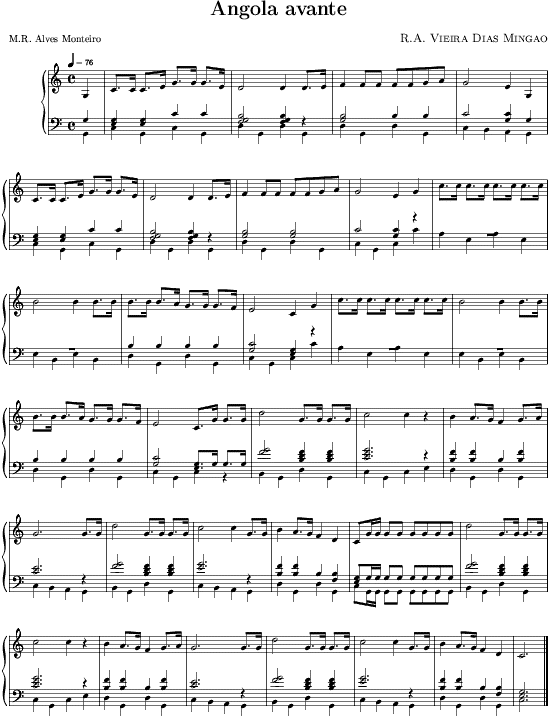National Anthem
ENGLISH TRANSLATION
O Fatherland, we shall never forget
The heroes of the Fourth of February.
O Fatherland, we salute your sons
Who died for our Independence.
We honour the past and our history
As by our work we build the New Man.
We honour the past and our history
As by our work we build the New Man.
CHORUS (twice)
Forward, Angola!
Revolution through the power of the People!
A United Country, Freedom,
One People, one Nation!
Let us raise our liberated voices
To the glory of the peoples of Africa.
We shall march, Angolan fighters,
In solidarity with oppressed peoples.
We shall fight proudly for Peace
Along with the progressive forces of the world.
We shall fight proudly for Peace
Along with the progressive forces of the world.
CHORUS (twice)
PORTUGESE LYRICS
O Pátria, nunca mais esqueceremos
Os heróis do quatro de Fevereio.
O Pátria, nós saudamos os teus filhos
Tombados pela nossa Independência.
Honramos o passado e a nossa História,
Construindo no Trabalho o Homem novo,
Honramos o passado e a nossa História,
Construindo no Trabalho o Homem novo.
CHORUS (twice)
Angola, avante!
Revolução, pelo Poder Popular!
Pátria Unida, Liberdade,
Um só povo, uma só Nação!
Levantemos nossas vozes libertadas
Para glóriados povos africanos.
Marchemos, combatentes angolanos,
Solidários com os poroso primidos.
Orgulhosos lutaremos Pela Paz
Com as forças progressistas do mundo.
Orgulhosos lutaremos Pela Paz
Com as forças progressistas do mundo.
CHORUS (twice)
Angola, avante!
Revolução, pelo Poder Popular!
Pátria Unida, Liberdade,
Um só povo, uma só Nação!








